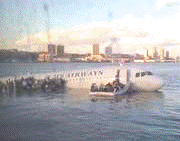Bird Strike Committee Proceedings

Bird Strike Committee-USA/Canada Joint Annual Meeting: 10th (2008)
Date of this Version
8-2008
Document Type
Article
Abstract
As ICAO implements the new SMS (Safety Management Systems) requirements for all international airports with its amended Annex 14 and the FAA moves to a more formally delineated requirement to implement SMS at all Part 139 airports, airport managers will soon have to face the development of full-fledged SMS programs for their airports. As an integral part of an airfield’s SMS, bird and wildlife management will also need to be incorporated into the SMS. With a dearth of literature on SMS and wildlife management and without an abundance of long-term experience at North American airfields, airport managers will not have a ready resource from which to draw and will face the difficulty of instituting programs they may not be fully prepared to undertake. ICAO in general, and several South and Central American airports in particular, have led the way in the development of comprehensive SMS at airfields. CARSAMPAF (Comité Regional CARSAMPAF de Prevención del Peligro Aviario y Fauna) strives to assists those airports in its region, as well as other airports around the world, in developing and implementing SMS through lessons learned (both good and bad) with existing SMS at South and Central American airports. This presentation will examine how North American airports can integrate bird and wildlife management into a comprehensive SMS in compliance with Annex 14 or the FAA’s SMS requirements. We will examine the basic features of SMS with relation to bird and wildlife management at airfields: safety culture, data collection and review, reporting, risk analysis, gap analysis, and performance indicators and discuss how these fit in to an airport’s overarching SMS.


Comments
Abstract of paper presented at Bird Strike Committee USA/Canada Meeting, Lake Mary and Sanford, Florida, August 18–21, 2008.